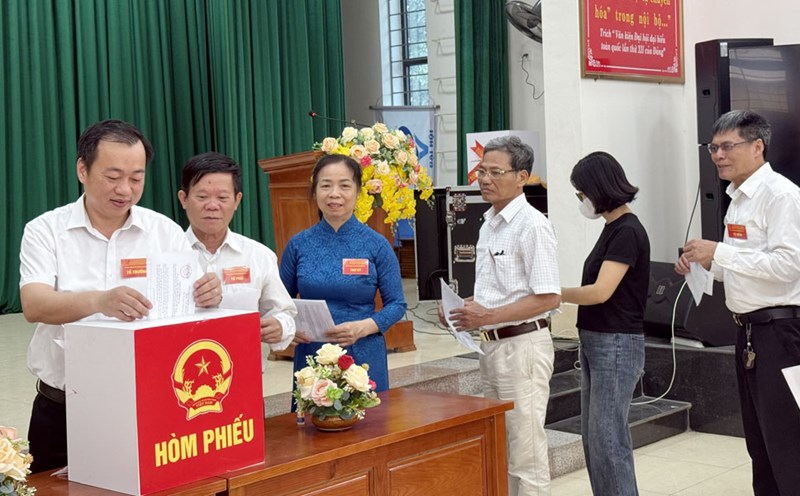The research team of the Institute of Archaeology and the Hai Duong Provincial Museum has just conducted an archaeological survey at a piece of rice fields of people in the Vi Vioi Soi area, Ngoc Son temple, Dong Den and Dong Da, Ngoc Son commune, Hai Duong city.
On an area of 20m2 with 4 excavations, the research team discovered 2,670 artifacts in Dong Han and 199 artifacts in Dong Son period. The artifacts are concentrated with many pieces of tiles and tile tiles, hard ceramic prints and yeast ceramics, iron nails, bronze rust, bronze slag, droplets of copper solution, ceramic balls ... The relics and relics find the inheritance and continuous development from the Dong Son period to the Eastern Han period in the amaranth area.
From the stratigraphy and relics of the excavation poll, archaeological researchers and experts have made important comments on historical value in this area. In particular, the initial determination of amaranth is a crowded center of the residents of the Dong Son period before the introduction of Han culture. The amaranth has two stages of continuous development, the late Dong Son period from the III-II-II century BC (about 2,200 to 2,300 years ago) and the Eastern Han period until the II-III century AD (about 1,700 to 1,800 years ago. The Dong Son period, this was a crowded residential area. Under the Han Dynasty, the amaranth was the district level of Giao Chi district.
During the working process, archaeologists and researchers have shared the same opinion, the amaranth area has great research potential, especially in the period of Dong Son and Dong Han. These will be important documents in understanding the history and culture of Ngoc Son land in particular and Hai Duong in general. The collected relics will supplement the valuable source of documents for the display, introduction and promotion of the heritage value of the land to the masses, domestic and foreign tourists.
The researchers recommend that in the coming time need to have in -depth, large -scale surveys combined in excavations in many different locations to determine the scope of the space, the scale of the monument, the nature of the pants ... At the same time, continue to expand the excavation to seek architectural works built in Dong Han period; Expand the exploration and excavation pit in different positions to clarify the distribution scope of Dong Son Culture class, search for vestiges of furnace area and bronze manipulation.
Some recommendations that it is necessary to make a plan to protect and preserve monuments and relics to avoid the situation of being abused or destroyed by the construction and cultivation of the people. In addition, developing a plan to compare and connect the amaranth relics in the overall archaeological monuments of Dong Son Cultural Culture (residence, burial, random detection of relics ...) and Dong Han period (resident or ruling relics, wooden tombs, brick tombs and other detections of relics ...) in Hai Duong and around. Since then, it is possible to determine the nature and dating of amaranth, as well as the role of this monument in the context of the Dong Son-Dong Han monuments in the North of Vietnam from the 3rd-II-II century BC to the II-III century AD.











